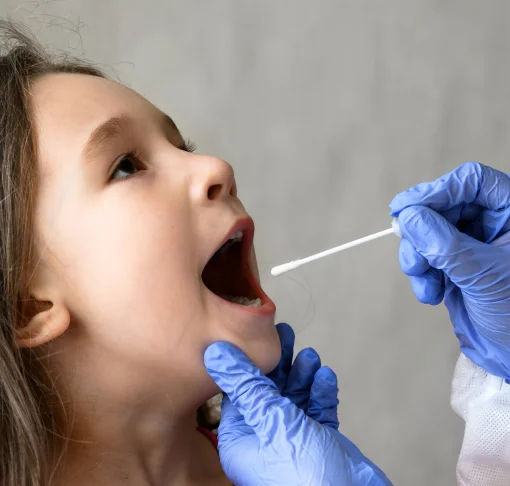Understanding the Complexities of Cocaine Test Interpretations
Cocaine testing, particularly in hair and other biological samples, plays a critical role in forensic and legal contexts. However, interpreting these results comes with its own set of challenges, especially when subjects are exposed to external contamination. With that in mind, inconclusive results and potential legal implications are a likely scenario. Understanding these factors is crucial for both legal professionals and individuals involved in such cases, as the accuracy of test results can significantly impact decision-making in family courts, probation programs, and criminal investigations.
Will Cocaine Show Up in a Hair Drug Test?
If you or your client are thinking, “Will cocaine usage show up in my hair drug test?” the answer is “yes.” Courts favor hair strand drug tests as they show a pattern of drug usage over time. This is different from urine, oral fluid, and blood tests, which can tell you if a drug has been taken recently (in the last 1 - 5 days).
Hair, on the other hand, stores a record of drug use and can be segmented over the course of 6 months to understand a pattern of drug use. However, one major limitation of hair strand drug testing for cocaine is contamination.
External Contamination: A Key Factor in Cocaine Test Results
“I have never used cocaine nor given my child cocaine; it’s likely from external contamination.” This is a question that is frequently raised at pre-proceedings or in court.
One of the primary concerns when interpreting cocaine test results is the possibility of external contamination. Hair samples, for example, can be exposed to environmental substances or even residue from personal items like clothing or products used by others. These contaminants can lead to the detection of cocaine metabolites in the sample, even if the individual being tested has not consumed the drug.
The issue of external contamination is more severe and impactful when it comes to children's testing cases. Children are exposed to their parent's habits, contaminated worktops, bedding, and third-party sources. This is why AttoLife experts advise that children's test results are to be considered with caution when interpreted.
This is a real issue. Oftentimes in courts, it’s possible to cast doubt over a set of legal findings, because it’s hard to differentiate between low levels of consumption and high levels of external contamination.
The move from a position of doubt to a position of certainty is likely possible if you understand the metabolites of cocaine and the different markers that can be measured.
The Metabolites of Cocaine
Cocaine is metabolised in the body into several distinct metabolites, each providing unique insights into the drug’s use and the timing of consumption. The primary metabolites of cocaine include benzoylecgonine (BE), ecgonine methyl ester (EME), and the more specific hydroxycocaine. Benzoylecgonine is the most commonly tested metabolite, as it is stable and detectable in urine, blood, and hair samples. Hydroxycocaine, on the other hand, is a crucial metabolite that offers more reliable evidence of recent cocaine use, as it directly correlates to the presence of the drug in the body. The inclusion of hydroxycocaine in testing provides greater accuracy and enhances the credibility of results, as it significantly reduces the possibility of false positives caused by external contamination or other environmental factors.
Hydroxycocaine: The Definitive Marker of Cocaine Consumption
The inclusion of Hydroxycocaine, a direct metabolite of cocaine, is a significant advancement in improving the reliability of results. Hydroxycocaine and hydroxybenzoylecgonine are more strongly associated with active drug consumption, providing a clearer picture of whether an individual has ingested cocaine or if the positive result may have been influenced by external factors.
The ability to differentiate between environmental contamination and actual drug use is crucial in ensuring that test results accurately reflect the subject’s behavior, particularly when it comes to legal matters. Without Hydroxycocaine testing, results may be skewed, leading to wrongful conclusions or even legal consequences for someone who did not use the drug.
By identifying a direct metabolite of cocaine, the chances of detecting drug use—even when the primary metabolites may be low or absent—increases. Hydroxycocaine and hydroxybenzoylecgonine testing enhance the accuracy of results and provide a more conclusive understanding of the subject’s cocaine consumption.
Banknotes and Cocaine Contamination: The Risk of Passive Exposure
Contamination of samples, particularly when it comes to hair and nail drug testing, is the number 1 limitation. Cocaine contamination on banknotes is a well-documented issue, often resulting from their use in drug transactions or as tools for consumption, such as snorting. Once contaminated, these notes circulate widely through wallets, tills, and banks, leading to extensive cross-contamination. Studies in urban areas have shown that, in some cases, up to 100% of tested banknotes carry traces of cocaine, with some containing concentrations as high as 889 micrograms per note.
Crucially, contamination isn’t limited to cocaine itself—some studies have even detected benzoylecgonine, a hydrolysis product of cocaine, on banknotes. Benzoylecgonine was identified in studies with a range of up to 130 ng/note, which is by many times higher than the recommended benzoylecgonine hair cut-off level. This raises concerns in forensic drug testing because benzoylecgonine can also form when cocaine comes into contact with saliva, sweat, or other moisture, meaning a person handling contaminated cash could inadvertently transfer the metabolite onto their skin or personal belongings. If tested, this could lead to a misleading positive result, wrongly suggesting cocaine use.
This is where hydroxycocaine testing becomes essential. Unlike benzoylecgonine, hydroxycocaine is a direct metabolite of cocaine, meaning it only forms when the drug has been actively consumed and processed by the body. Its presence provides definitive evidence of use, rather than passive contamination. By incorporating hydroxycocaine and hydroxybenzoylecgonine testing, forensic experts can distinguish between environmental exposure and genuine drug ingestion, ensuring that drug test results are both accurate and legally defensible.
Legal Implications: Ensuring Fair and Reliable Test Results
The legal implications of inaccurate or inconclusive cocaine test results can be severe, affecting both criminal and civil cases. For individuals undergoing drug testing as part of a legal proceeding, such as family court custody hearings, care proceedings, probation monitoring, or rehabilitation assessments, test results play a pivotal role in shaping decisions that can impact their lives significantly.
External contamination and inconclusive results can undermine the credibility of test findings, leading to legal challenges or even wrongful accusations. For example, a person might face custody issues or child adoption orders based on a test result that inaccurately suggests cocaine use or cocaine given to a child, due to contamination from an external source.
As such, it is essential for legal professionals, social workers, and court officials to understand the limitations of drug testing, especially in the context of cocaine. They must ensure that testing protocols are robust and incorporate advanced techniques, like Hydroxycocaine and hydroxybenzoylecgonine testing, to avoid misinterpretation of results. By doing so, they can provide more accurate evidence, which can lead to fairer outcomes in legal proceedings.
Navigating the Complexities of Cocaine Testing
Cocaine testing, particularly in forensic and legal contexts, presents several challenges, including external contamination, inconclusive results, and potential legal implications. The addition of direct metabolites like Hydroxycocaine and hydroxybenzoylecgonine to testing protocols is a vital step toward improving the accuracy and reliability of results, ensuring that they reflect actual drug consumption rather than external exposure.
For legal professionals and individuals involved in drug testing cases, it is crucial to understand these challenges and ensure that testing methods are robust enough to provide accurate, reliable, and defensible results. With the right advancements in testing technology and a clear understanding of how to interpret results, it is possible to achieve fairer and more just outcomes in drug-related legal proceedings.
Watch our latest webinar: Definitive Cocaine Consumption Marker, Discover Hydroxycocaine!
Watch Webinar

